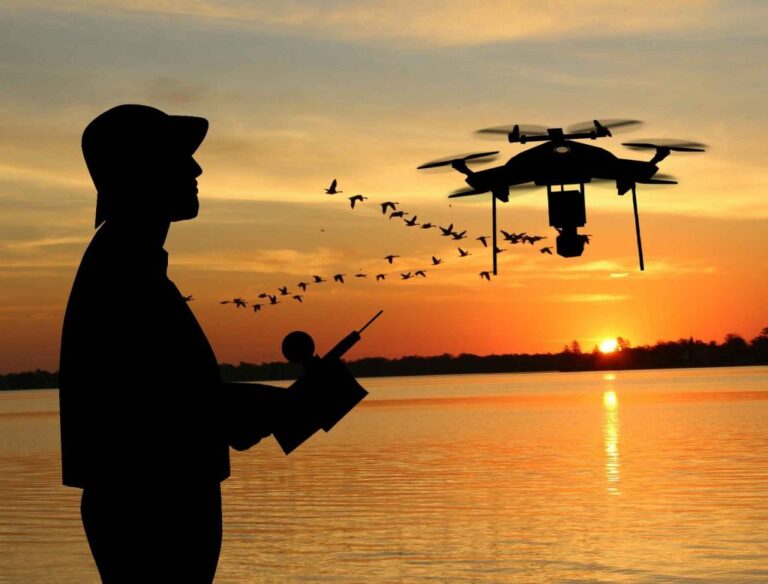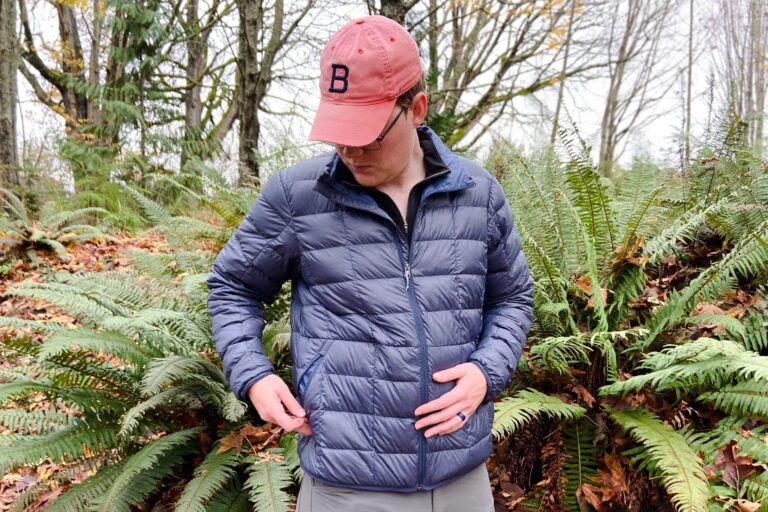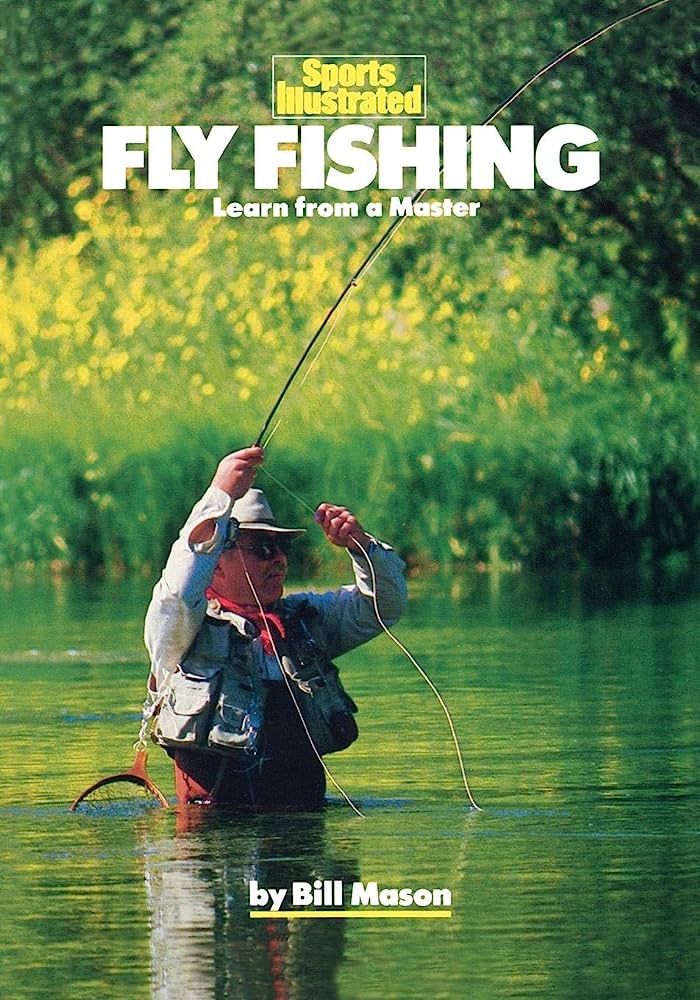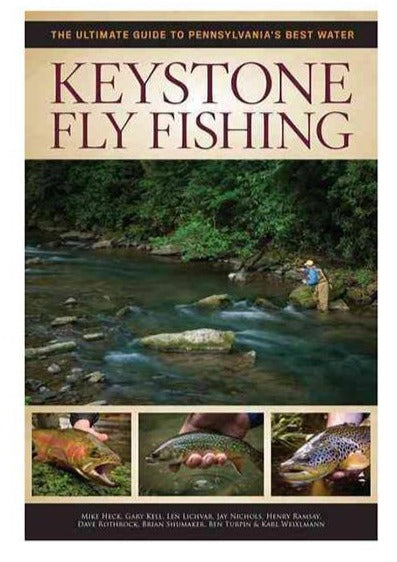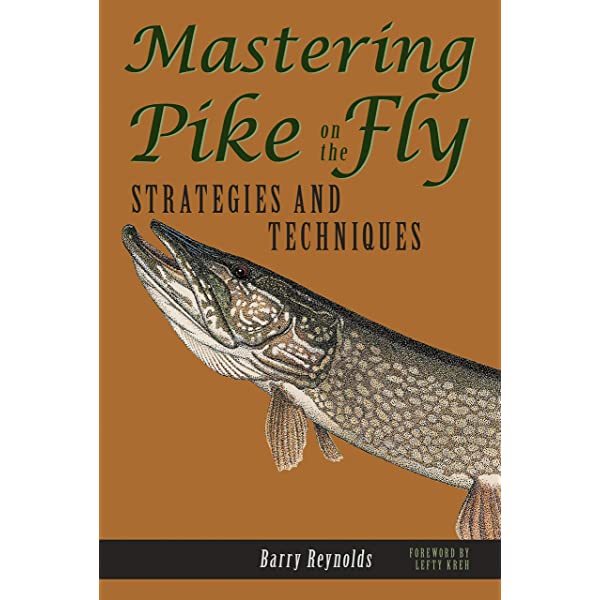The best fly fishing gear for trout includes a fly rod, reel, line, and various types of flies specifically designed for trout fishing. Along with these basic essentials, other useful accessories include waders, wading boots, and a landing net.
The right gear is crucial for success in trout fishing, as it allows for accurate casting, optimal line control, and effective presentation of the flies. By choosing the appropriate gear based on the specific trout fishing environment and conditions, anglers can improve their chances of catching trout in rivers, lakes, and streams.
With a wide range of options available, anglers can find the perfect gear to enhance their fly fishing experience and increase their chances of landing a prized trout.

Credit: www.tridentflyfishing.com
Understanding Trout Behavior And Habitat
Insights Into Trout Behavior And Habitat
Trout are renowned for their elusive nature and can be quite challenging to catch without a proper understanding of their behavior and habitat. When it comes to fly fishing for trout, having a comprehensive understanding of these factors can greatly influence your gear selection and increase your chances of success on the water.
Let’s dive into the insights into trout behavior and habitat that every angler should know.
Understanding Trout Behavior
- Trout are known for their cautious and wary nature. They are easily spooked by loud noises, vibrations, and sudden movements, making stealth a crucial factor in successfully catching them.
- They tend to be most active during the early morning and late evening when the water temperature is cooler. This is when they are more likely to feed, making it an ideal time for fly fishing.
- Trout prefer to habitat in clear and well-oxygenated water. They can be found in various freshwater environments such as rivers, streams, and lakes.
- Their feeding patterns depend on the specific species and their available food sources in their habitat. Understanding their feeding habits will help you choose the right fly patterns to imitate their natural prey.
Matching The Hatch
- The concept of “matching the hatch” is vital in fly fishing for trout. It involves imitating the insects or other aquatic organisms that trout feed on during a specific time and place.
- By observing the insects and other organisms present around the water, you can determine the most suitable fly patterns to use. This includes considering the size, color, and behavior of the insects.
- Using a fly that closely imitates the natural prey will increase your chances of enticing trout to strike, as they are more likely to be fooled by a fly that resembles something they commonly feed on.
Choosing The Right Fly Line Weight
- The weight of your fly line is an essential factor to consider when selecting gear for trout fishing. The appropriate fly line weight will depend on the size of the trout you are targeting, as well as the fishing conditions.
- Generally, a lighter weight fly line (2-4 weight) is suitable for smaller trout found in small streams or when targeting trout in calm conditions. This will provide delicate presentations and ensure the trout are not scared away.
- For larger trout or when fishing in windy conditions or fast-moving rivers, a heavier fly line (5-7 weight) may be necessary to cast larger flies and effectively control your drift.
Remember, understanding trout behavior and habitat will greatly enhance your chances of success when fly fishing for trout. By considering their behavior, matching the hatch, and choosing the right fly line weight, you’ll be well-equipped to have a productive day on the water.
So get out there, test your knowledge, and enjoy the thrill of fly fishing for trout!
Essential Fly Rods For Trout Fishing
There’s nothing quite like the thrill of fly fishing for trout. The shimmering waters, the peaceful tranquility, and the challenge of hooking these elusive fish make it an incredibly rewarding pursuit. But in order to have a successful trout fishing experience, you need the right gear.
And one of the most essential pieces of equipment you’ll need is a quality fly rod. In this section, we’ll explore the characteristics of a good trout fly rod, the difference between fast-action and moderate-action rods, and the best fly rods for various trout fishing situations.
Characteristics Of A Good Trout Fly Rod:
- Length: Ideally, a trout fly rod should be around 8 to 9 feet in length. This provides the necessary leverage for casting accuracy and control.
- Weight: A 4 to 6 weight rod is typically recommended for trout fishing. This provides enough backbone to handle larger fish while still maintaining sensitivity for delicate presentations.
- Action: A medium to fast action rod is generally preferred for trout fishing. This allows for greater casting distance, improved accuracy, and better hook-setting power.
- Material: Graphite rods are the most common choice for trout fishing due to their light weight, strength, and responsiveness. They offer excellent sensitivity, enabling anglers to feel even the subtlest of bites.
Fast-Action Vs. Moderate-Action Rods:
- Fast-action rods: These rods are designed for power and distance, making them ideal for casting larger flies or fishing in windy conditions. They offer quick line speed and strong backbone, which can be advantageous when targeting aggressive trout or fishing in bigger waters.
- Moderate-action rods: These rods offer more flexibility and are better suited for delicate presentations and smaller streams. They provide a softer, slower casting stroke, allowing for greater accuracy and finesse in small water environments.
Best Fly Rods For Trout Fishing Based On Different Situations:
Dry fly fishing:
- Orvis helios 3f: This rod offers exceptional accuracy and delicate presentation, making it well-suited for dry fly fishing. It has a responsive tip that allows for precise casting and a light feel that enhances the angler’s ability to feel subtle takes.
- Sage trout ll: Known for its smooth and relaxed casting stroke, this rod is perfect for presenting dry flies with grace and finesse. It offers excellent control and accuracy at close to medium distances.
- Redington hydrogen: This lightweight rod combines sensitivity with good line control, making it ideal for nymphing. Its medium-fast action allows for precise mends and accurate drifts, enabling anglers to effectively fish deep and slow water.
- G. loomis nrx+: With its exceptional sensitivity and subtle tip, this rod excels in detecting the subtlest of nymph strikes. It has a fast recovery speed, enabling precise hook sets and increased control over the line.
- Scott radian: This rod offers a fast action with a strong backbone, allowing anglers to cast large streamer patterns with ease. It provides excellent line control and the power needed to effectively fish streamers in various water conditions.
- Winston boron iii x: Known for its versatility, this rod offers a combination of power and finesse. Its fast action enables long casts and accurate presentations, making it suitable for both small and large streamer fishing.
Remember, selecting the right trout fly rod can greatly enhance your fishing experience. Consider the characteristics, action type, and the specific fishing situation to make an informed decision. With the right fly rod in hand, you’ll be well-equipped to reel in those beautiful trout and create memories that will last a lifetime.
Selecting The Perfect Fly Reel
The Role Of Fly Reels In Trout Fishing
A high-quality fly reel is an essential piece of gear for any angler who wants to maximize their success in trout fishing. The fly reel serves multiple purposes, making it a vital component of your gear setup. Here are the key roles of a fly reel in trout fishing:
- Line management: The primary role of a fly reel is to store and manage your fishing line. It allows you to smoothly feed out line during casts and efficiently retrieve it when reeling in your catch.
- Hooking and fighting fish: When a trout takes your fly, the fly reel enables you to set the hook securely. It also offers resistance against the fish’s pull, allowing you to tire out and successfully land your prized catch.
- Balancing the rod: A well-balanced setup is crucial for comfortable and efficient fishing. The reel’s weight helps achieve this balance by adding counterweight to the rod, enhancing your casting accuracy.
Considerations For Choosing A Fly Reel For Trout Fishing
Selecting the perfect fly reel for trout fishing involves careful consideration of various factors. Here are some essential points to keep in mind when choosing a fly reel:
- Arbor size and line capacity: The arbor size determines the amount of backing and fly line the reel can hold. A larger arbor provides faster line retrieval and reduces line memory, while a smaller arbor can be more lightweight and compact.
- Drag system options: The drag system is vital for controlling the line’s tension when fighting powerful trout. Disc drags offer smooth and consistent resistance, while click-and-pawl drags provide a traditional and often more delicate feel.
- Weight and balance: Matching the weight of your fly reel to your rod ensures optimal balance, reducing fatigue during long casting sessions. Lightweight reels are usually preferred for trout fishing, as they allow for effortless handling and enhance sensitivity.
- Durability and construction: Consider the reel’s build quality and materials, as they impact reliability and longevity. Machined reels are known for their durability, while cast reels may offer a more affordable option.
- Budget and personal preference: Determine your budget range and prioritize features based on your specific needs and fishing style. Balancing your requirements with available options will help you make the best choice.
Remember, selecting a fly reel for trout fishing is a personal decision that depends on various factors such as your skill level, fishing conditions, and personal preferences. Take your time to research and test different options to find the perfect reel that complements your fishing style and enhances your trout fishing experience.
Fly Lines For Trout Fishing Success
Choosing the right fly line is crucial for successful trout fishing. Different fishing conditions and techniques require specific types of fly lines that effectively present your fly to the fish. In this section, we will discuss the importance of matching the fly line to the fishing conditions, explore the different types of fly lines for trout fishing, and provide recommendations for specific trout fishing techniques.
Importance Of Matching The Fly Line To The Fishing Conditions
Matching the fly line to the fishing conditions is essential for increasing your chances of success when targeting trout. Here are a few key points to consider:
- Water type: Choose a fly line based on the type of water you’ll be fishing in, such as rivers, streams, lakes, or ponds. Different water types require different presentations and sinking rates.
- Fishing depth: If you plan to fish deeper waters, consider using a sinking fly line that can effectively get your fly down to the desired depth.
- Casting distance: Consider the casting distance you’ll need to achieve. Some fly lines are designed for longer casts, while others are better suited for close-range fishing.
- Climatic conditions: Take into account weather conditions such as wind, temperature, and humidity, as they can affect the performance of your fly line.
Different Types Of Fly Lines For Trout Fishing
When it comes to fly lines for trout fishing, there are a few main types to choose from. Each type has its own characteristics and advantages. Let’s take a look at them:
- Weight-forward lines: Weight-forward lines have a heavier front section, making them ideal for casting longer distances. They provide better control and accuracy, making them suitable for various trout fishing techniques.
- Double-taper lines: Double-taper lines have an even diameter throughout most of the line’s length, with the tapering only at the ends. They allow for delicate presentations and are versatile in different fishing scenarios.
- Specialty lines: Specialty lines are designed for specific trout fishing techniques and conditions. For example, nymphing lines are designed to help you fish nymphs at different depths, while dry fly lines are made to present dry flies delicately.
- Sinking lines: If you plan to fish deep pools or target trout in deeper waters, sinking lines are a great choice. These lines are designed to sink at different rates and help you reach the desired depth.
Recommendations For Specific Trout Fishing Techniques
Different trout fishing techniques require specific fly lines to maximize your chances of success. Here are some recommendations for various techniques:
- Dry fly fishing: For dry fly fishing, choose a weight-forward or double-taper line that allows for delicate presentations and accurate casts.
- Nymphing: Opt for a nymphing line or a weight-forward line with a longer, fine leader to effectively fish nymphs at different depths.
- Streamers: When targeting trout with streamers, consider using a sink-tip line or a sinking line to get your streamer down to the desired depth.
- Lake fishing: In lakes or ponds, a weight-forward line or a sinking line can be effective for reaching the deeper zones where trout often reside.
Remember, selecting the right fly line for trout fishing can greatly enhance your chances of hooking into that elusive trout. Consider the fishing conditions, techniques, and your personal preferences when choosing a fly line to achieve optimal results.
Fly Fishing Leaders And Tippets
Understanding The Purpose Of Leaders And Tippets In Fly Fishing
Leaders and tippets are essential components of your fly fishing setup when targeting trout. They serve different purposes, but they work together to ensure a successful fishing experience. Let’s dive into the key points of understanding the role of leaders and tippets in fly fishing:
- Leaders, typically made of nylon or fluorocarbon, are the transparent sections of line that connect your fly line to the fly. They serve multiple purposes:
- Leaders provide an invisible connection between the fly line and the fly, allowing for a more natural presentation.
- They help transfer energy from the fly line to the fly, enabling accurate casting.
- Leaders also act as shock absorbers, preventing the line from breaking when a fish strikes.
- Tippets are the thinner sections of line attached to the end of the leader. They are usually made of the same material as the leader but have a smaller diameter. Here’s why tippets are important:
- Tippets provide the final extension of the leader, allowing for a smoother turnover and delicate presentation of the fly.
- They act as a sacrificial section of line, enabling the tippet to break instead of the leader or fly line when a snag or break-off occurs.
Factors To Consider When Selecting Leaders And Tippets For Trout Fishing
Choosing the right leaders and tippets is crucial for trout fishing success. Several factors should be taken into account to ensure optimal performance. Consider the following points when selecting leaders and tippets:
- Length and strength:
- Leaders come in various lengths, typically ranging from 7.5 to 12 feet. Shorter leaders are easier to cast and control in windy conditions, while longer leaders provide better drag-free drifts.
- The strength of the leader should match the size of the fish you’re targeting. For trout fishing, leaders with test strengths between 4x and 6x are commonly used.
- Material choices:
- Nylon leaders are cost-effective and perform well in most situations. They offer good flexibility and knot strength, making them suitable for beginners.
- Fluorocarbon leaders have superior invisibility in water and are more abrasion-resistant. They are ideal for clear water conditions and when targeting wary trout.
Pro Tips For Effectively Using Leaders And Tippets
Mastering the use of leaders and tippets is essential to maximize your fly fishing success. Here are some pro tips to enhance your fishing experience:
- Ensure proper leader-to-tippet connection:
- Use appropriate knots, such as the clinch knot or improved clinch knot, to secure the tippet to the leader. A strong connection is vital for efficient energy transfer during casting.
- Regularly check the connection for wear and tear, retying if necessary, to prevent line breakage when fighting trout.
- Gradually transition tippet diameter:
- When building a leader, gradually decrease the tippet diameter from the butt section to the fly. This progressive taper enhances accuracy and turnover, allowing for delicate presentations.
- Replace tippet regularly:
- Tippets can weaken over time due to abrasion and stress. Replace tippet sections frequently, especially after catching multiple fish or encountering snags, to maintain optimal strength and performance.
Using suitable leaders and tippets tailored to your fishing conditions and target trout species will significantly improve your chances of hooking into that prized catch. Remember to experiment, adjust, and refine your setup based on your fishing preferences and the specific trout fishing scenarios you encounter.
Happy angling!
Must-Have Trout Flies
Overview Of Essential Trout Fly Patterns
Trout flies are an essential part of any fly fishing gear collection for trout. They mimic the insects and aquatic creatures that trout feed on, enticing them to strike. Here is an overview of some must-have trout fly patterns:
- Dry flies: Designed to float on the water’s surface, dry flies imitate insects like mayflies, caddisflies, and stoneflies. These patterns are perfect for when trout are actively feeding on the surface.
- Nymphs: Nymph flies imitate the immature form of aquatic insects that trout often feed on below the water’s surface. They can be fished using a variety of techniques like dead drifting or adding weight to sink them deeper.
- Streamers: Streamer flies mimic small fish or baitfish, enticing predatory trout to strike. They are great for targeting larger trout or in conditions with low visibility.
- Wet flies: Wet flies imitate drowned insects or emerging insects just below the surface. They can be fished at various depths, making them versatile options for trout fishing.
Match-The-Hatch Approach For Effective Fly Selection
Adopting a match-the-hatch approach is crucial for effective fly selection. This means selecting a trout fly that closely resembles the insects or creatures available for trout to feed on at a particular time and location. Here are some key points on match-the-hatch approach:
- Observe the surroundings: Take note of the insect activity around the water, including flying insects, emerging insects, or insects getting swept away by the current.
- Study the hatch charts: Hatch charts provide valuable information on the timing and patterns of insect hatches in specific areas. Use them to select the appropriate trout flies.
- Consider the size, shape, and color: Take into account the size, shape, and color of the insects in the area. Choose a trout fly that closely matches these characteristics.
- Experiment and adapt: If one type of trout fly is not producing results, be willing to switch to a different pattern to better match the current hatch.
Recommended Trout Flies For Different Seasons And Conditions
Trout behavior and feeding habits can vary across seasons and conditions, necessitating different fly patterns for optimal success. Here are some recommended trout flies based on different seasons and conditions:
- Spring: During spring, trout often feed on mayflies and caddisflies. Recommended fly patterns include blue winged olive, march brown, and elk hair caddis.
- Summer: As the weather warms up, terrestrial insects like grasshoppers, beetles, and ants become staple food for trout. Consider using fly patterns such as chernobyl ant, foam beetle, and parachute hopper.
- Fall: In fall, trout become more aggressive in preparation for winter, making streamer flies effective. Patterns like woolly bugger, muddler minnow, and sculpin imitate small baitfish.
- Winter: During colder months, nymphs are the go-to choice as trout feed primarily below the surface. Effective patterns include pheasant tail nymph, zebra midge, and brassie.
Experimenting with different patterns and adjusting your fly selection based on the season and prevailing conditions can significantly boost your success rate when targeting trout. Remember to continually observe the environment and adapt accordingly.
Remember, effective trout fly selection means closely imitating the insects and creatures trout are feeding on at a given time and location. By understanding the different fly patterns and observing the surrounding environment, you can enhance your fly fishing experience and increase your chances of landing that prized trout.
Happy fishing!
Other Essential Gear And Accessories
Fly fishing is a beloved pastime for many outdoor enthusiasts, and for those who enjoy targeting trout, having the right gear is essential. In addition to the basics like fly rods, reels, and flies, there are several other pieces of gear and accessories that can greatly enhance the fly fishing experience.
In this section, we will explore some of the other essential gear and accessories that every trout angler should consider adding to their arsenal.
Fly Fishing Vests And Packs
Fly fishing vests and packs are designed to keep all of your fishing gear organized and easily accessible while on the water. They typically feature multiple pockets and compartments to hold everything from your fly boxes to your leaders and tippet.
Here are some key points to consider:
- Fly fishing vests provide ample storage space and distribute the weight of your gear evenly across your shoulders and back.
- Chest packs offer a compact and lightweight alternative to vests, allowing for easy movement and quick access to essential items.
- Sling packs are worn diagonally across the body, providing a comfortable and versatile option for anglers who prefer to keep their gear within reach.
Fishing Nets
A fishing net is an essential tool for safely landing and releasing trout. Here’s what you need to know:
- Look for nets with rubberized mesh to minimize damage to the fish’s delicate scales and fins.
- Consider the net size and handle length based on the average size of trout you are targeting.
- Magnetic net releases can be attached to your vest or pack, keeping your net secure and easily accessible when needed.
Fly Boxes And Storage Solutions
Keeping your flies organized and protected is crucial for an enjoyable day on the water. Consider the following:
- Fly boxes come in various sizes and styles, from pocket-sized to large waterproof cases.
- Choose a fly box with compartmentalized inserts to keep different types and sizes of flies separate.
- Consider investing in a fly patch or fly foam that can be attached to your vest or pack for quick fly changes.
Waders And Wading Boots
Waders and wading boots provide the necessary protection and traction when entering the water. Here’s what to consider:
- Choose waders made from breathable materials to prevent overheating and maximize comfort.
- Look for waders with built-in gravel guards to keep small rocks and debris from entering your boots.
- Wading boots should have studded or felt soles for added traction on slippery riverbeds.
Essential Accessories For Trout Fishing
In addition to the gear mentioned above, there are a few other accessories that can enhance your trout fishing experience. Consider these key points:
- Polarized sunglasses help reduce glare on the water, allowing you to spot fish and read the water more effectively.
- A quality fishing hat with a wide brim provides protection from the sun and improves visibility when casting.
- A waterproof phone case or dry bag is essential for keeping your electronics safe and dry while on the water.
- Don’t forget to pack sunscreen, insect repellent, and a small first aid kit to stay protected and prepared.
By investing in the right gear and accessories, you can ensure a more enjoyable and successful trout fishing adventure. Whether it’s a well-organized vest or pack, a reliable fishing net, or the essential fly boxes and storage solutions, having the right tools at your disposal will make all the difference on the water.
So gear up, get out there, and enjoy the thrill of fly fishing for trout!
Expert Tips For Maintenance And Care Of Fly Fishing Gear
Proper gear maintenance is crucial for prolonging the lifespan of your fly fishing equipment. By taking care of your gear and keeping it in top condition, you can ensure optimal performance and make your fly fishing experience more enjoyable. Here are some expert tips on maintaining and caring for your fly fishing gear:
Cleaning And Storing Fly Rods, Reels, And Lines
Proper cleaning and storage of your fly rods, reels, and lines is essential to prevent damage and corrosion. Follow these tips to keep your gear in tip-top shape:
- Clean your fly rods after every fishing trip by gently wiping them down with a soft cloth. Remove any dirt, debris, or moisture that may have accumulated.
- Inspect your fly rods for any signs of damage, such as cracks or loose ferrules. If you notice any issues, have them repaired by a professional before using them again.
- Store your fly rods in a protective case or tube to prevent them from getting scratched or dented. Avoid leaving them exposed to extreme temperatures or direct sunlight for prolonged periods.
- Rinse your fly reels with freshwater after each use to remove any salt, sand, or dirt. Dry them thoroughly before storing them.
- Check the drag system of your fly reels regularly to ensure it is functioning smoothly. Lubricate if necessary, but be sure to use reel-specific lubricants recommended by the manufacturer.
- Store your fly reels in a cool, dry place to prevent rust and corrosion. Consider removing the fly line before long-term storage to reduce the risk of line memory.
Tips For Inspecting And Replacing Worn-Out Gear Components
Regularly inspecting your fly fishing gear for worn-out components is essential to maintain optimal performance. Here are some tips to help you identify and replace any worn-out gear components:
- Check your fly lines for any signs of cracking, splitting, or fraying. Worn-out fly lines can affect casting distance and accuracy. If you notice any damage, replace the fly line with a new one.
- Inspect the guides and wraps on your fly rod for any loose or damaged threads. Loose guides can impact the action of the rod, while damaged wraps can lead to further unraveling. If necessary, have the guides rewrapped or replaced by a professional rod builder.
- Examine the grip and reel seat of your fly rod for signs of wear or damage. Cracked or worn-out grips can make casting uncomfortable, while a loose reel seat can affect the stability of the reel. Consider replacing these components if needed.
- Check the backing, fly line, and leader connections to ensure they are secure and in good condition. Replace any worn-out or damaged connections to avoid losing fish or compromising your presentation.
- Inspect the flies in your fly box for any signs of wear, such as bent hooks, damaged wings, or frayed materials. Replace any worn-out flies to maintain their effectiveness.
By following these expert tips for maintenance and care of your fly fishing gear, you can ensure that it lasts longer and performs optimally. Taking the time to clean, store, and inspect your gear will not only save you money in the long run but also enhance your overall fly fishing experience.
Remember, a well-maintained gear equals successful fishing ventures!
Conclusion
To sum up, choosing the best fly fishing gear for trout is crucial for a successful and enjoyable fishing experience. By investing in high-quality fly rods, reels, lines, and flies specifically designed for trout, anglers can enhance their chances of landing these elusive and spirited fish.
It is essential to consider factors such as rod length and weight, reel features, line weight, and fly patterns when selecting the gear. Additionally, paying attention to the specific conditions and water types where trout are found can further inform gear choices.
By equipping yourself with the right gear, you can cast with precision, achieve optimal presentation, and ultimately increase your chances of hooking into these prized fish. So, in your pursuit of the best trout fishing experience, prioritize quality and suitability when selecting your fly fishing gear.
Happy fishing!


